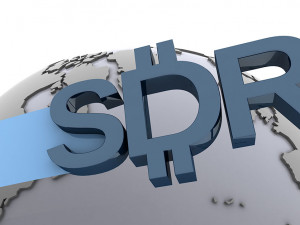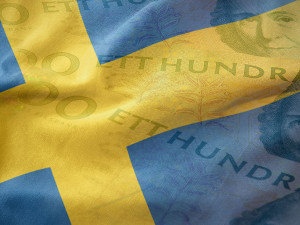
With global interest rates on the rise and expected to remain elevated through the rest of the year, we would like to look at the issue of higher interest rates and their impact on international currency movements.
Elevated interest rates can notably impact the relative value of currencies against each other, and we will investigate how this occurs.

Why do interest rates affect FX transactions?
Interest rates do not affect FX transactions directly, but they can affect secondary effects around currencies such as increased FX volatility.
FX volatility
Higher interest rates tend to increase currency volatility as uncertainty about central bank policy increases around the world.
We have seen this effect in the Japanese yen, which has strengthened against the US dollar and other currencies as the Bank of Japan has not changed its easy monetary policy stance. As a result, volatility in JPY pairs remains high.
The increased volatility can have a significant impact on companies and businesses involved in international transactions, as they have to take into account not only the exchange rate but also the changing volatility of the exchange rate in their decisions.
Less predictability
As FX volatility increases, the predictability of the FX market decreases. Higher interest rates affect the FX market in unpredictable ways, making it difficult for companies and businesses to gain a reliable understanding of future FX movements.
This can cause problems for companies and businesses operating in international markets, as FX volatility can lead to significant profitability issues if not properly managed.
Higher interest rates and increased FX volatility can therefore be a significant challenge for international companies exposed to multiple global currencies. Not only do they have to take the changing exchange rate into account when making decisions, but they now also have to take into account the increased volatility and unpredictability of the market.
As a result, this effect can lead to difficulties in planning, budgeting and forecasting, making it difficult to make accurate long-term strategic decisions.
Cost of currency hedging
Higher interest rates tend to push up the cost of currency hedging. While there are always winners and losers in a hedging contract as interest rates and exchange rates change, investors and companies generally tend to increase their exposure to hedging contracts to compensate for increased volatility.
While the interest rate risk of an existing currency swap will be slightly negative for one side in a rising interest rate environment, the effect is not large compared to an interest rate swap.
More generally, it becomes more difficult and expensive to enter into new swap contracts for hedging purposes. As a result, swap contracts tend to become more expensive due to increased counterparty risk and other factors affected by general uncertainty.
The faster interest rates rise, the more pronounced these effects will be. This can lead to higher costs for those who use currency hedging to manage their international transactions.
New hedging strategies
As interest rates rise and currency hedging becomes more expensive, market participants are being forced to adjust their hedging strategies accordingly.
This includes reassessing which type of hedging instrument is best suited to their situation and ensuring that their hedging strategy is tailored to their specific currency risk profile.
Yield curves
Higher interest rates can affect the shape of the yield curve, which shows the relationship between interest rates on different maturities of an asset. When interest rates rise, the yield curve tends to steepen, meaning that assets with shorter maturities have a higher yield than assets with longer maturities. This can lead to changes in market conditions and affect the way investors make funding decisions, shifting the emphasis away from short-term funding towards long-term funding.
Reduced liquidity
Overall, it is clear that higher interest rates have a significant impact on FX markets, international corporates, market participants and financial markets. As a result, liquidity in stressed FX markets can decrease sharply and companies need to be aware of the changing environment in order to better manage their FX risks.

Interest rate outlook for the rest of 2023
In his testimony to Congress in early March, FED Chairman Jerome Powell made it clear that the central bank is prepared to respond to recent signs of economic strength by raising interest rates more than previously expected.
This is an important statement because it shows that the Federal Reserve is willing to take additional steps to maintain price stability and fight inflation. It also shows that the Federal Reserve is not relying solely on the traditional tools of monetary policy to effect change, but is also considering other, more dynamic measures.
He also noted that the Fed’s fight against inflation is very likely to come at some cost to the labour market. It suggests that the Federal Reserve is aware of the potential consequences of its actions and is trying to balance economic considerations when formulating its policy decisions. Inflating wages too quickly could lead to a decline in overall consumer purchasing power, which would be detrimental to the long-term health of the economy, while raising rates too quickly could prove detrimental to job growth.
However, last week’s events surrounding the collapse of Silicon Valley Bank and the emergency funding of Credit Suisse have dramatically changed the situation: it is now very unclear whether rates will actually rise any further at all. As of last Friday, the market was pricing in 100 basis points of rate cuts from a peak expected in May.
Looking for a trusted counterparty to hedge your FX exposure in volatile times? Currencytransfer offers access to a network of FCA-regulated currency exchange partners through their platform. Sign up for an account today.
G.C. Wagner
Gustav Christopher is a writer specialising in finance, tech, and sustainability. Over 15 years, he worked in banking, trading and as a FinTech entrepreneur. In addition, he enjoys playing chess, running, and tennis.



